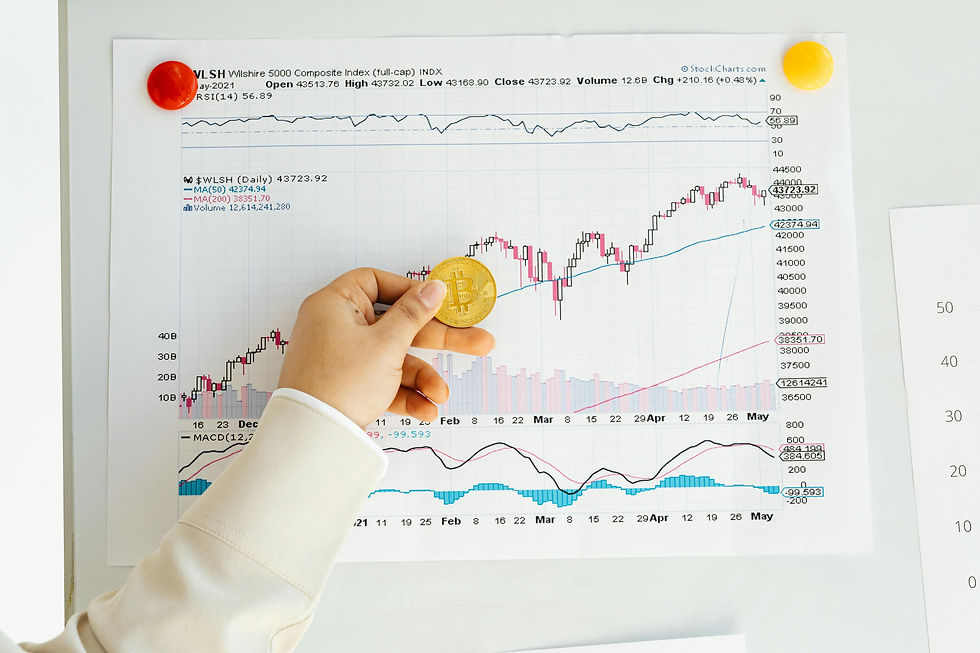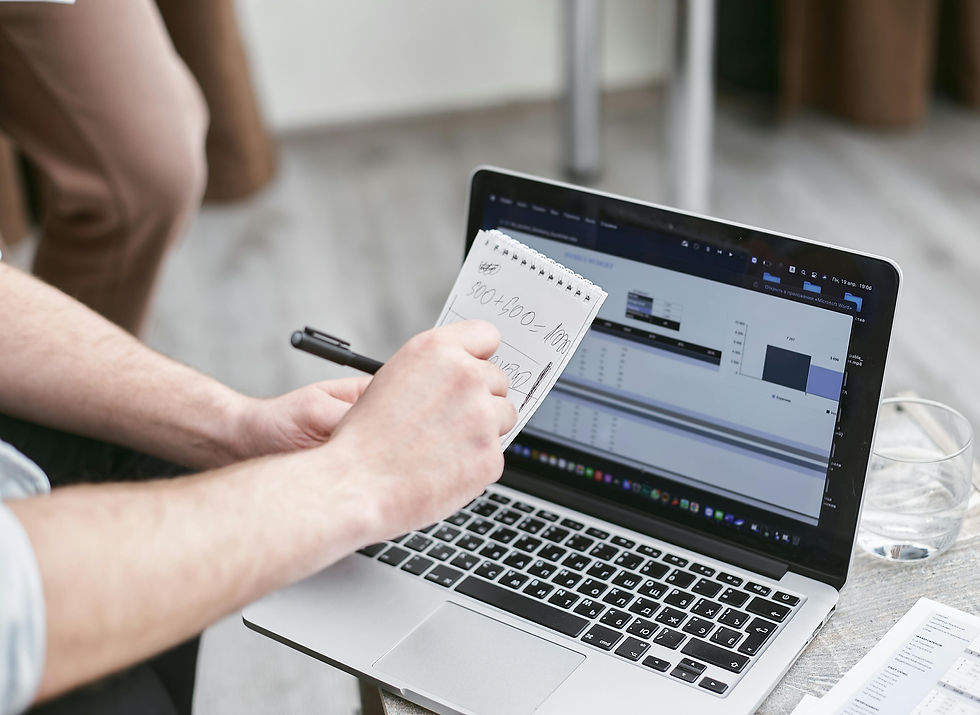What is Paper Trading? A Beginner's Guide
- Mr Money TV

- May 15, 2024
- 5 min read
Are you looking to dip your toes into investment waters but are afraid of the risk of losing your hard-earned cash? You're not alone! Investing in the stock market can be intimidating, especially for beginners. Given the market's complexities and the fear of financial loss, it's no wonder that many struggle to take the first step. Paper trading is an invaluable tool to familiarise yourself with the stock market and test your investment skills without using your own real money.

This simple guide will help you learn about paper trading, discover the benefits of paper trading, and learn how to get started. Let's dive in. Summary: 1. What is paper trading? 2. Why is it called paper trading? 3. How does paper trading work? 4. Benefits and considerations of paper trading 5. How to start paper trading
What is paper trading?
Paper trading, or virtual trading, is a practice that enables investors to buy and sell “fake” stocks, bonds, or cryptocurrencies in a simulated environment without financial transactions.
Think of it as an investment training ground where you can experience all the thrills of buying and selling without the risk of losing any real money. Whether you’re a budding investor or a seasoned investor, paper trading is an essential tool to learn trading skills before venturing into the real market.
Why is it called ‘paper trading’?

The term paper trading comes from the old-school practice of traders jotting down their trades on paper.
Before online trading platforms existed, aspiring traders would practice their trading skills on paper to avoid risking losses on the live market. They would record hypothetical trades by hand to keep tabs on virtual portfolios, profits, or losses.
Thanks to technology, paper trading can now be done digitally through electronic stock market simulators that mimic the look and feel of actual trading platforms. moomoo, for example, offers a free-to-use paper trading feature that makes it easy for investors to practice risk-free trading with realistic stock market data.
How does paper trading work?
The process of paper trading involves using a virtual or demo account provided by an investment platform. Users are given a set amount of virtual money to invest and can buy and sell assets just like in real trading. The only difference is that no actual money is at stake. This means you'll be granted virtual cash to make trades just like you would with real money. You can buy and sell stocks, track your portfolio's performance, and experiment with different strategies without risking a penny.
Benefits of Paper Trading:
Now that you understand what paper trading is, let's get into why you should try paper trading.
1. Risk-free and Stress-free Learning
One of the biggest advantages of paper trading is that it is risk-free and stress-free. Since no real money is involved, you can make trades based solely on your analysis and risk appetite. You'll be able to explore various investment moves and take higher risks than you would with real capital.
2. Builds Your Confidence
As cliche as it may sound, practice makes perfect. When you practice paper trading, you can test strategies, monitor your performance, and tweak your strategy. By doing so, you'll feel confident in making informed decisions when you transition into the real market.
3. Gain Better Understanding
Practicing paper trading helps deepen your understanding of how the market works. You’ll gain insight into how factors like politics and economics influence market prices, which will help you build a solid foundation of market knowledge.
4. Develop Emotional Discipline
Successful trading requires discipline and patience. Paper trading provides a platform to practice these crucial skills without the pressure of real money on the line. You can learn to control your emotions, stick to your trading plan, and avoid impulsive decisions.
Considerations When Paper Trading:
1. Limited Market Simulation
While paper trading gives you valuable trading practice, it may not accurately mimic the complexities of real-life market conditions that impact live trading, such as slippage and order execution delays.
2. Take It Seriously
While there's no real cash involved, it's still important to treat paper trading seriously and make decisions as if you were using real money. This will enable you to test your investment ideas, adjust your strategies, refine your trading skills, and develop the emotional discipline needed for successful live trading.
3. The Overconfidence Trap
You may run the risk of falling into the overconfidence trap after a few successful simulated trades. The false sense of security may result in a harsh lesson when transitioning into the real market. Keep in mind that live trading comes with unpredictable risks, and the outcomes of simulated trades may not mirror similar results in live trades.
4. Returns are Not Real
As paper trading is virtual, the obvious downside of paper trading is that although you can't lose any money, you'll also not be able to cash out any of your returns.
How to Get Started with Paper Trading
The moomoo app features a free-to-use paper trade simulator for investors to trade in realistic market conditions, risk-free. Follow these simple steps to get started on moomoo:
Step 1. Open an Account
You can start by opening an account here. Once you’ve downloaded the mobile app, log in with your verified credentials. moomoo gives you the convenience of logging in with your social media credentials or Google account.

Step 2: Access the Paper Trading Feature
After you log into the moomoo app, access the Papertrade feature through the Discover tab and select Papertrade to activate your paper trading account.

Step 3: Activate Your Paper Trading Account
Upon activating your paper trading account, you'll be credited with $1 million in virtual cash to start trading in the US and global stock markets.

How to Start Paper Trading
1. Decide on a Trading Strategy
The first thing you need to do is choose a trading strategy. Planning a trading strategy depends on your personality, level of discipline, and risk tolerance. This plan will help guide your decisions about when to buy or sell.
2. Choose Stocks to Trade
Next, decide which stocks to trade. Look for stocks that have the potential for big profits. It's essential to research and understand how stocks perform.
3. Place Your Order
On the moomoo app, select your asset, select your order type, price, quantity, and amount, and tap on the buy button to place your order.

4. Learn and Improve
Analyse your trades to see what went well and what didn't. Based on your findings, make changes to improve your strategy.
Conclusion
Whether you're an absolute novice or a seasoned investor looking to fine-tune your investment strategies, paper trading is a great way to gain practical trading experience and build your confidence in trading.
Subscribe to our financial newsletter for the latest news, insights, and advice on personal finance, investing, and more. With every email, you’ll gather the confidence and knowledge to make informed decisions to achieve your financial goals.

![Moomoo Malaysia Full Review [2025]: Fees, Features, Account Opening & Promotion](https://static.wixstatic.com/media/0ce738_20975532d1824c2b897a884398d5a801~mv2.png/v1/fill/w_980,h_551,al_c,q_90,usm_0.66_1.00_0.01,enc_avif,quality_auto/0ce738_20975532d1824c2b897a884398d5a801~mv2.png)